Antarctica Photography Camera Gear
Antarctica Photography Camera Gear
What to Pack
I’ve been asked a number of times what I typically pack when it comes to my photography trips to Antarctica or the Arctic. I’ve been South over a dozen times now, the same heading North, and that list of equipment has gone from just shy of the kitchen sink too including the sink, or so it seemed, up to now where I’ve really reduced the gear list. It’s tempting to bring everything you have, especially if this is your first voyage South, but that can sometimes get in the way of paying attention to what you’re doing or trying to capture. Keep it simple.
Unless you’re able to get on a voyage to the Emperor Penguins, usually around Snow Hill Island, I would suggest leaving the “big guns” at home. When I took that trip I carried more gear than usual including the Nikkor 200-400mm. The 400mm does come in handy but now I prefer the Nikkor 80-400mm as it’s much smaller/lighter and still gives me the results I need and the zoom range is much more inline with the variety of subjects and distances you’re likely to encounter.. So, below is a list of what I currently pack.
I always carry at least 2 camera bodies, currently a Nikon D810 and Nikon D800, batteries and memory cards. A 16-35mm, 24-70mm, 28-300mm and a 80-400mm all Nikkor brand. Most of the time I’ve got the 28-300mm on the camera when in the Zodiac unless there are whales around then I’m likely to put on the longer lens to start out with. I might end up with the 16-35mm when the whales are right under the Zodiac and then be wishing I had something wider! Having the flexibility to zoom at different focal lengths when in the Zodiac is very important and trying to switch lens, or even cameras can mean the difference in your ability to capture that spontaneous moment which happens often. ALWAYS go out prepared for that unexpected moment, not just with the gear you select but with the camera settings and how you have your kit packed.
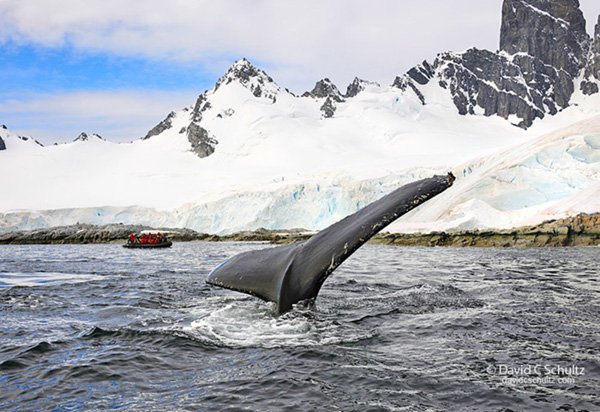 I take a mid-size tripod with an easy to use ballhead usaully a Gitzo Mountaineer Carbon Fiber tripod and a Really Right Stuff BH55 head. I also bring along a monopod with an Acratech GV2 ballhead. Occasionally I shoot video with either a waterproof Lumix or GoPro and so I bring along a Joby GoridllaPod in case I want to strap the camera outside when the ship is blasting through big waves or just to set it on the ground next to the penguins. Have fun and try some time-lapse shooting around the penguin rookeries or “highways”.
I take a mid-size tripod with an easy to use ballhead usaully a Gitzo Mountaineer Carbon Fiber tripod and a Really Right Stuff BH55 head. I also bring along a monopod with an Acratech GV2 ballhead. Occasionally I shoot video with either a waterproof Lumix or GoPro and so I bring along a Joby GoridllaPod in case I want to strap the camera outside when the ship is blasting through big waves or just to set it on the ground next to the penguins. Have fun and try some time-lapse shooting around the penguin rookeries or “highways”.

You’ll want to keep your hands free while going down or coming up the gangway so make sure you have a good watertight backpack and or a dry bag with shoulder straps.There’s a good chance you’ll get wet while in the Zodiacs so a dry bag might be considered. I have a LowePro AWII PhotoTrekker camera pack that I’ve had for 14 years and it’s been completely soaked a number of times. It does have a rain shield to pull out and so I’ve not bothered with a dry bag. I’ve recently updated that bag to a LowePro Whistler AW450, which I’ve modified a bit with an exacto blade and duct tape. :-) Should you find yourself, and your pack, getting drenched remember to place your pack on the top of your boots so it’s not sitting in the water. Not a problem with a dry bag.
While onshore the camera gear selected may be different. This is when the tripod may get used as well as at times when on the ship, when the ship is not in motion.
I also grab a towel out of the cabin and carry small pieces of cotton cloth, like from an old flannel shirt, to clean my lens. Micro fiber stuff is useless when water drops, especially saltwater, gets on your lens. A remote release might come in handy and I suggest a wireless trigger so you don’t have to be in front of the camera to activate it.
I do bring a laptop, external drives and plug adapters, including a USB hub, as well as any cables and cords I need. Power outlets can be sparse on the ship so you might consider packing a small power strip with a USB outlet. A thumb drive can come in handy should you care to share photos you’ve captured of other passengers or maybe ones they got of you in action! Make sure any of your software is updated, especially if you’ve just purchased a new camera. Bring along a digital version of your cameras manual too. Odds and ends include UV and polarizing filters and sometimes a variable ND filter. Pack a small tool kit with the needed allen wrenches, screw drivers, Leatherman and blower bulb to start with.
I had an earlier blog post which went over a little of this information but also included more about clothing and travel plans in general. Here’s a link to that post.
If you have any questions fire away!
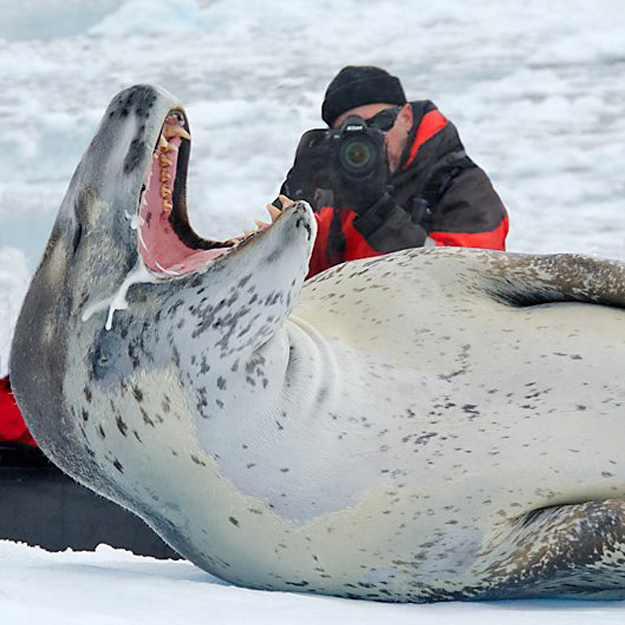


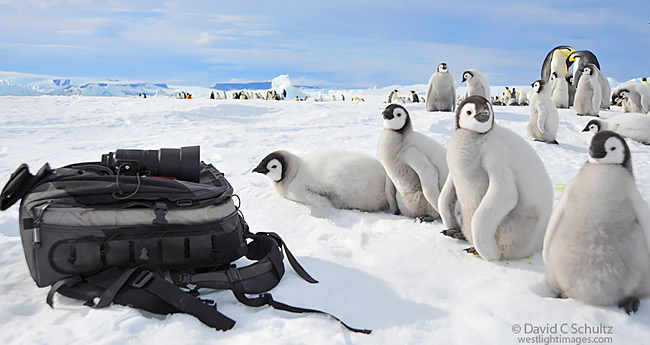
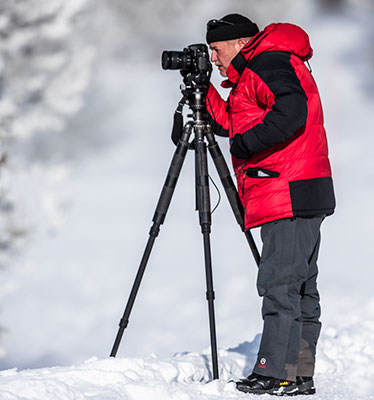
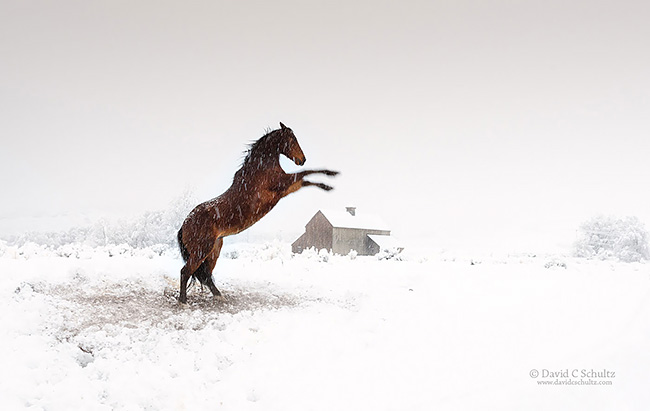
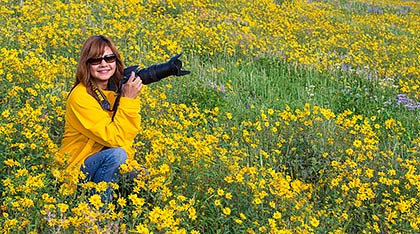
8 Comments
Hello David,
I have found your site really interesting and informative, thank you! I have been taking photos for years but never in the Antarctic which is now happening, yippee!
I have a Nikon 750 and plan to take my 28-300 & 80-400 as you suggest. Is it also worth carrying the 24-85 as its slightly wider?
Kind regards
Ian Gillett
I would definitely take the 24-85mm even though there’s a little redundancy with focal lengths. The 28-300mm can be a bit soft at 28mm so opt for the 24-85 when doing mostly wide angle shots if you can. Great if you have 2 bodies, which I recommend, but I understand if that’s not possible. The less switching of lenses you have to do the better, especially when out shooting in the Zodiacs.
Thanks for the comment! Have a great time. I’m back down there in March.
Any recommendations in terms of gloves?
I take two pair of light weight glove liners (with touch screen ability), 2 pair of heavier gloves and a pair of heavier rubber gloves like commercial fishermen use. The rubber glove should be large enough to put on while wearing the thin glove liners. Also, the rubber gloves are used only when in the Zodiac to keep your hand dry while moving about quickly. You’re going to be hanging onto ropes at that time and getting splashed. Don’t forget hand warmers if you have issues being out in the cold. One of those placed inside you hat while out shooting can really help.
Hope that helps!
Hi David,
Thanks for the great info! I hope to get on a last minute cruise to Antarctica after Christmas then will be backing Argentina and uraguay so I want to keep my pack and gear as light as possible .
I will be taking my 80D and currently have a 10-20, 17-70 2.8, 18-250 and was considering to buy the new Tamron 18-400 but not sure if that range will be necessary? Would like to stick with taking 2 lens!
Thanks in advance for any input!
Kira
Hello Kira!
Great timing as I’m here working on a more generic gear list pertaining to winter travel shooting.
A go-to lens, on my Nikon’s, for shooting in Antarctica is a 28-300mm just to give you an idea of a very useful range. Keeping your gear to a reasonable minimum, especially since you’ll be traveling to other locations, is a great plan. Where a longer telephoto lens will be helpful is if you like to photograph birds. You’ll have plenty of them flying around the ship as you sail across the Drake.
If you do get the 18-400mm then I would also take the 10-20mm if you go with the 2 lens approach. Keep in mind that you’ll want to be changing lenses as little as possible, especially when out in the Zodiac. I’d be starting out with the 18-400mm mounted when in the Zodiac.
Hope that helps. Enjoy!
Hi David,
Thanks for your helpful piece on equipment. I’m going to the Falklands, South Georgia and the Peninsula in January. I have a Kata photo backpack with a rain cover that I really like. I’m planning on taking a D750 and D500 with 24-120 and 70-200 lenses, respectively, plus a 300 pf. I plan to pack each inside zip lock bags for transfers to and from shore. I think that should work.
I’m interested in how you protect your cameras on Zodiac cruises — my ship to shore solution wouldn’t work for those.
For those cruises, I’m thinking of forgoing the D500 and just taking the D750 with the 24-120 packed in a dry bag, or possibly a waterproof camera bag like this:
https://www.amazon.com/gp/product/B01LZEUV9X/ref=ox_sc_sfl_title_8?ie=UTF8&psc=1&smid=A3EB8VK0XP1HIP.
Thanks for any suggestions.
Paul
Usually if conditions are good enough for Zodiac cruising you usually won’t have to worry about gear getting wet, at least not from ocean spray.
You do want to be able to get your camera in and out of whatever bag, case or pack you decide to use. It’s when going from the ship to shore or returning from longer zodiac cruises that the ride gets bumpy and wet. A good driver will tell you to stow your gear if you’re going to get a wet ride. Keep your pack propped up on your feet then in case the floor of the Zodiac starts getting full of water. Have fun!